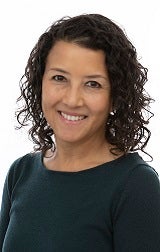Fight or Flight: Are you a trigger or positive support?
February 6, 2023This article was originally published in the January 30, 2023 edition of The Fresno Bee.
“What is wrong with you?!” We’ve all had this thought when witnessing someone make a mountain out of a proverbial mole hill. Their reaction is out of proportion to the situation, completely over the top.
But did you ever stop to think that perhaps, the better – more supportive – question we should be asking is rather, “What happened to you?” By being mindful of the path others have walked and learning to identify if someone has been the victim of trauma, we could actually be helping someone rather than causing more hurt.
Why might we wonder about a history of trauma? When a person experiences a potentially life-threatening event or emotionally harmful circumstance, they appropriately move into a fight-or-flight mode. This is a normal response to a dangerous situation – one that is rooted in self-preservation. But when individuals are exposed to repeated trauma, or if they experience significant stressors without protective supports in their life, they may begin to exist in survival mode. Their brain and body are chronically activated, always wary of that looming threat which is why one may respond out of proportion to mildly stressful or even typical situations. Their previous survival mechanisms, such as becoming combative (fight) or withdrawing (flight) kick in. But instead of being protective, they are potentially harmful.
Let’s take a step back – what could cause such trauma?
In 1998, a landmark Kaiser and Centers for Disease Control and Prevention study identified 10 adverse childhood experiences (ACEs) comprised of forms of abuse, neglect and household dysfunction. From this study, we learned that one out of six adults have experienced at least one ACE, regardless of socioeconomic status or educational achievement. 16% have experienced four or more ACEs, with women, racial/ethnic minorities, low-income individuals and other marginalized populations being at much higher risk. There is a dose-dependent response, which means that the more ACEs one has experienced, the higher the risk for adverse health outcomes such as heart disease, obesity, cancer and depression. In fact, the odds ratio for a suicide attempt in an individual with an ACE score of four or more is 37:1, relative to someone who experienced no ACEs.
Now imagine – no less than one out of six people you interact with each day – friends, family, colleagues – has experienced some form of trauma. You may even be one of them. We all bring our emotions, experiences and coping mechanisms to our encounters, and most often, those experiences are unknown to others. How we interact with one another could either trigger a response or be a positive support. Trauma is widespread, so it is important that we approach others with a trauma-informed lens.
What does “trauma-informed” mean? It means approaching our interactions with one another in a manner that builds trust, empowers others and strengthens collaboration. It requires a paradigm shift and reframing how we view the actions, behaviors and interactions of those around us.
By learning how to appropriately identify and respond to someone who has experienced trauma or is triggered, we can decrease the likelihood of re-traumatization, and increase the chances that our interactions will help build resilience.
About the Author
Dr. Carmela Sosa-Unguez is a primary care physician and director of Valley Children's Guilds Center for Community Health. She has practiced pediatrics in both the urban and rural health settings, always focused on children with special healthcare needs and pediatric mental health. Since she joined the organization in 2012, Dr. Sosa-Unguez has held a variety of leadership roles, including Associate Program Director of the Valley Children’s Pediatric Residency Program, Medical Director of Valley Children’s Primary Care, and her current role as director for Valley Children’s Guilds Center for Community Health, where she works with community partners to improve the health of kids outside of the hospital walls. With her knowledge and expertise, she works to combat the social determinants that impact the overall well-being of kids throughout the Central Valley.
